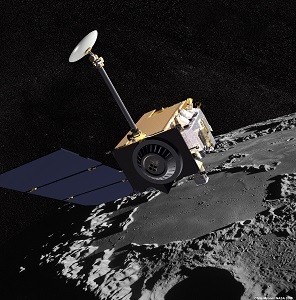
Though the coming lunar eclipse will have millions of thrilled eyes gazing at the sky, it poses a challenge for the NASA's moon orbiter.
The batteries that charge NASA's Lunar Reconnaissance Orbiter (LRO) require sunlight to recharge. Due to the total lunar eclipse that will visibly occur over the Western Hemisphere on 14 and 15 April, the spacecraft will have to travel in darkness.
"The spacecraft will be going straight from the moon's shadow to the Earth's shadow while it orbits during the eclipse. We're taking precautions to make sure everything is fine. We're turning off the instruments and will monitor the spacecraft every few hours when it's visible from Earth." Noah Petro, LRO deputy project scientist at NASA's Goddard Space Flight Center in Greenbelt, Md., said in a statement, according to space.com.
"For quite a while, people in LRO have been analyzing what's going to happen during this eclipse. We'll make sure the world knows LRO survived with no problems." he added.
The eclipse has forced the LRO team to carefully shrive at their mission. Eclipses however, sometimes allow scientific opportunity for the LRO mission, like, the orbiter can measure how the lunar cools down during such events, giving clues about the composition of the lunar surface, according to researchers.
The upcoming eclipse will begin at 12:53 a.m. EDT (4:53 a.m. GMT or 10:23 a.m. IST) on April 15. The dramatic phase will end at 4:24 a.m. EDT (08:24 a.m. GMT or 01:55 p.m IST), and the eclipse will get over by 5:33 a.m. EDT (09:33 GMT or 03:00 p.m. IST).
The next week's eclipse will be the first among the four total lunar eclipses that will glow in the Earth's skies. Other eclipses will occur on 8 October 2014, 4 April and 28 September 2015.
The Lunar Reconnaissance Orbiter, a $504 million mission was launched in June 2009 in order to record all details of the moon. The orbiter is of the size of a small car and has seven varied science instruments.
(Edited by Vanilla Sharma)















